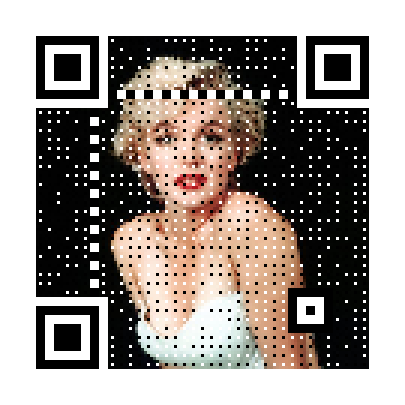https://oroboro.com/unique-machine-fingerprint/
Sometimes you need a program to know if it is running on the same machine. There are a lot of purposes for this, but a common one is if you are writing a licensing module. You want to generate a machine id, get a cryptographic license key from a server, and then each time the program runs you check the machine’s fingerprint against the one stored in the license file.
But how to identify the machine?
Hardware IDs: Many pieces of hardware have a hardware serial number. This includes the CPU, each of the hard disks, and all the network interfaces, which each have a globally unique MAC address.
Software IDs: Each disk volume generally will also have a software serial number. You can also use the machine’s name as part of the identifier. If the user has changed the machine’s name then this is an indication that the user considers this a different system.
The software id’s are in the user’s control and can be duplicated. In other words the user could clone the machine and have it have the same name and same volume ids as the cloned system. But the hardware ids are almost impossible to duplicate.
So the strategy is, get all these numbers, hash them together to create a fingerprint, and then compare the fingerprint against the license file.
We will want to give the system a little flexibility such that if a few components are upgraded the fingerprint may be different – but might be similar enough for you to consider a machine that has say just a change in a network card, or hard disk upgrade to be the same machine for your purposes.
Getting the IDs
Lets get to work. First we create a cross platform set of functions to return these ids. Here is the header:
void getMacHash( u16& mac1, u16& mac2 );u16 getVolumeHash();u16 getCpuHash();const char* getMachineName(); |
Now on Windows you get these ids like this:
#include <windows.h>#include <intrin.h>#include <iphlpapi.h>// we just need this for purposes of unique machine id. // So any one or two mac's is fine.u16 hashMacAddress( PIP_ADAPTER_INFO info ){ u16 hash = 0; for ( u32 i = 0; i < info->AddressLength; i++ ) { hash += ( info->Address[i] << (( i & 1 ) * 8 )); } return hash;}void getMacHash( u16& mac1, u16& mac2 ){ IP_ADAPTER_INFO AdapterInfo[32]; DWORD dwBufLen = sizeof( AdapterInfo ); DWORD dwStatus = GetAdaptersInfo( AdapterInfo, &dwBufLen ); if ( dwStatus != ERROR_SUCCESS ) return; // no adapters. PIP_ADAPTER_INFO pAdapterInfo = AdapterInfo; mac1 = hashMacAddress( pAdapterInfo ); if ( pAdapterInfo->Next ) mac2 = hashMacAddress( pAdapterInfo->Next ); // sort the mac addresses. We don't want to invalidate // both macs if they just change order. if ( mac1 > mac2 ) { u16 tmp = mac2; mac2 = mac1; mac1 = tmp; }}u16 getVolumeHash(){ DWORD serialNum = 0; // Determine if this volume uses an NTFS file system. GetVolumeInformation( "c:\\", NULL, 0, &serialNum, NULL, NULL, NULL, 0 ); u16 hash = (u16)(( serialNum + ( serialNum >> 16 )) & 0xFFFF ); return hash;}u16 getCpuHash(){ int cpuinfo[4] = { 0, 0, 0, 0 }; __cpuid( cpuinfo, 0 ); u16 hash = 0; u16* ptr = (u16*)(&cpuinfo[0]); for ( u32 i = 0; i < 8; i++ ) hash += ptr[i]; return hash;}const char* getMachineName(){ static char computerName[1024]; DWORD size = 1024; GetComputerName( computerName, &size ); return &(computerName[0]);} |
On Linux and OsX you get them like this:
#include "machine_id.h"#include <unistd.h>#include <errno.h>#include <sys/types.h>#include <sys/socket.h>#include <netdb.h>#include <netinet/in.h>#include <netinet/in_systm.h>#include <netinet/ip.h>#include <netinet/ip_icmp.h>#include <sys/types.h>#include <sys/ioctl.h>#ifdef DARWIN#include <sys/types.h>#include <sys/socket.h>#include <net/if_dl.h>#include <ifaddrs.h>#include <net/if_types.h>#else //!DARWIN#include <linux/if.h>#include <linux/sockios.h>#endif //!DARWIN#include <sys/resource.h>#include <sys/utsname.h>//---------------------------------get MAC addresses ---------------------------------// we just need this for purposes of unique machine id. So any one or two // mac's is fine.u16 hashMacAddress( u8* mac ){ u16 hash = 0; for ( u32 i = 0; i < 6; i++ ) { hash += ( mac[i] << (( i & 1 ) * 8 )); } return hash;}void getMacHash( u16& mac1, u16& mac2 ){ mac1 = 0; mac2 = 0;#ifdef DARWIN struct ifaddrs* ifaphead; if ( getifaddrs( &ifaphead ) != 0 ) return; // iterate over the net interfaces bool foundMac1 = false; struct ifaddrs* ifap; for ( ifap = ifaphead; ifap; ifap = ifap->ifa_next ) { struct sockaddr_dl* sdl = (struct sockaddr_dl*)ifap->ifa_addr; if ( sdl && ( sdl->sdl_family == AF_LINK ) && ( sdl->sdl_type == IFT_ETHER )) { if ( !foundMac1 ) { foundMac1 = true; mac1 = hashMacAddress( (u8*)(LLADDR(sdl))); //sdl->sdl_data) + sdl->sdl_nlen) ); } else { mac2 = hashMacAddress( (u8*)(LLADDR(sdl))); //sdl->sdl_data) + sdl->sdl_nlen) ); break; } } } freeifaddrs( ifaphead );#else // !DARWIN int sock = socket(AF_INET, SOCK_DGRAM, IPPROTO_IP ); if ( sock < 0 ) return; // enumerate all IP addresses of the system struct ifconf conf; char ifconfbuf[ 128 * sizeof(struct ifreq) ]; memset( ifconfbuf, 0, sizeof( ifconfbuf )); conf.ifc_buf = ifconfbuf; conf.ifc_len = sizeof( ifconfbuf ); if ( ioctl( sock, SIOCGIFCONF, &conf )) { assert(0); return; } // get MAC address bool foundMac1 = false; struct ifreq* ifr; for ( ifr = conf.ifc_req; (s8*)ifr < (s8*)conf.ifc_req + conf.ifc_len; ifr++ ) { if ( ifr->ifr_addr.sa_data == (ifr+1)->ifr_addr.sa_data ) continue; // duplicate, skip it if ( ioctl( sock, SIOCGIFFLAGS, ifr )) continue; // failed to get flags, skip it if ( ioctl( sock, SIOCGIFHWADDR, ifr ) == 0 ) { if ( !foundMac1 ) { foundMac1 = true; mac1 = hashMacAddress( (u8*)&(ifr->ifr_addr.sa_data)); } else { mac2 = hashMacAddress( (u8*)&(ifr->ifr_addr.sa_data)); break; } } } close( sock );#endif // !DARWIN // sort the mac addresses. We don't want to invalidate // both macs if they just change order. if ( mac1 > mac2 ) { u16 tmp = mac2; mac2 = mac1; mac1 = tmp; }}u16 getVolumeHash(){ // we don't have a 'volume serial number' like on windows. // Lets hash the system name instead. u8* sysname = (u8*)getMachineName(); u16 hash = 0; for ( u32 i = 0; sysname[i]; i++ ) hash += ( sysname[i] << (( i & 1 ) * 8 )); return hash;}#ifdef DARWIN #include <mach-o/arch.h> u16 getCpuHash() { const NXArchInfo* info = NXGetLocalArchInfo(); u16 val = 0; val += (u16)info->cputype; val += (u16)info->cpusubtype; return val; }#else // !DARWIN static void getCpuid( u32* p, u32 ax ) { __asm __volatile ( "movl %%ebx, %%esi\n\t" "cpuid\n\t" "xchgl %%ebx, %%esi" : "=a" (p[0]), "=S" (p[1]), "=c" (p[2]), "=d" (p[3]) : "0" (ax) ); } u16 getCpuHash() { u32 cpuinfo[4] = { 0, 0, 0, 0 }; getCpuid( cpuinfo, 0 ); u16 hash = 0; u32* ptr = (&cpuinfo[0]); for ( u32 i = 0; i < 4; i++ ) hash += (ptr[i] & 0xFFFF) + ( ptr[i] >> 16 ); return hash; }#endif // !DARWINconst char* getMachineName(){ static struct utsname u; if ( uname( &u ) < 0 ) { assert(0); return "unknown"; } return u.nodename;} |
Next we combine them to create a fingerprint.
First we create some information hiding functions. These are just to make the hashes a little less obvious where they came from. This is not true cryptographic security. Just a little something to make the hashes a little less obvious to reverse engineer.
u16 mask[5] = { 0x4e25, 0xf4a1, 0x5437, 0xab41, 0x0000 };static void smear( u16* id ){ for ( u32 i = 0; i < 5; i++ ) for ( u32 j = i; j < 5; j++ ) if ( i != j ) id[i] ^= id[j]; for ( u32 i = 0; i < 5; i++ ) id[i] ^= mask[i];}static void unsmear( u16* id ){ for ( u32 i = 0; i < 5; i++ ) id[i] ^= mask[i]; for ( u32 i = 0; i < 5; i++ ) for ( u32 j = 0; j < i; j++ ) if ( i != j ) id[4-i] ^= id[4-j];} |
Now we use the 16-bit hashes to create a 72 bit machine fingerprint. We will use the cpu id, the volume id, and the first two MAC addresses for the first 64 bits, then add 16 bits of check digits:
static u16* computeSystemUniqueId(){ static u16 id[5]; static bool computed = false; if ( computed ) return id; // produce a number that uniquely identifies this system. id[0] = getCpuHash(); id[1] = getVolumeHash(); getMacHash( id[2], id[3] ); // fifth block is some checkdigits id[4] = 0; for ( u32 i = 0; i < 4; i++ ) id[4] += id[i]; smear( id ); computed = true; return id;} |
This is a human readable version of the id that includes the system name. So users can match fingerprints to systems when managing license files:
const char* getSystemUniqueId(){ // get the name of the computer KxCbuf buf; buf << getMachineName(); u16* id = computeSystemUniqueId(); for ( u32 i = 0; i < 5; i++ ) { char num[16]; snprintf( num, 16, "%x", id[i] ); buf << "-"; switch( strlen( num )) { case 1: buf << "000"; break; case 2: buf << "00"; break; case 3: buf << "0"; break; } buf << num; } char* p = buf.getBuffer(); while ( *p ) { *p = toupper( *p ); p++; } return KxSymbol( buf.getBuffer()).string();} |
KxCBuf is a convenient stream object that holds a text buffer. You can substitute this with a Std:String, if you don’t have something like this of your own already.
This is how we validate the fingerprint.
static bool validate( KxSymbol testIdString ){ // unpack the given string. parse failures return false. KxCbuf testString; testString << testIdString; char* testName = strtok( testString.getBuffer(), "-" ); if ( !testName ) return false; u16 testId[5]; for ( u32 i = 0; i < 5; i++ ) { char* testNum = strtok( NULL, "-" ); if ( !testNum ) return false; testId[i] = (u16)(strtol( testNum, NULL, 16 )); } unsmear( testId ); // make sure this id is valid - by looking at the checkdigits u16 check = 0; for ( u32 i = 0; i < 4; i++ ) check += testId[i]; if ( check != testId[4] ) return false; // get the current system information u16 systemId[5]; memcpy( systemId, computeSystemUniqueId(), sizeof( systemId )); unsmear( systemId ); // now start scoring the match u32 score = 0; for ( u32 i = 0; i < 4; i++ ) if ( testId[i] == systemId[i] ) score++; if ( !strcmp( getMachineName(), testName )) score++; // if we score 3 points or more then the id matches. return ( score >= 3 ) ? true : false; } |
 延陵明天
延陵明天![[转]条件变量的陷阱与思考-延陵明天](http://7vzmyh.com1.z0.glb.clouddn.com/blog-condition_variable_1.png)
![[转]_tmain(int argc, _TCHAR* ARGV[])下命令行参数用法-延陵明天](http://img.blog.csdn.net/20140212125754328?watermark/2/text/aHR0cDovL2Jsb2cuY3Nkbi5uZXQvcmVueWh1aQ==/font/5a6L5L2T/fontsize/400/fill/I0JBQkFCMA==/dissolve/70/gravity/Center)





